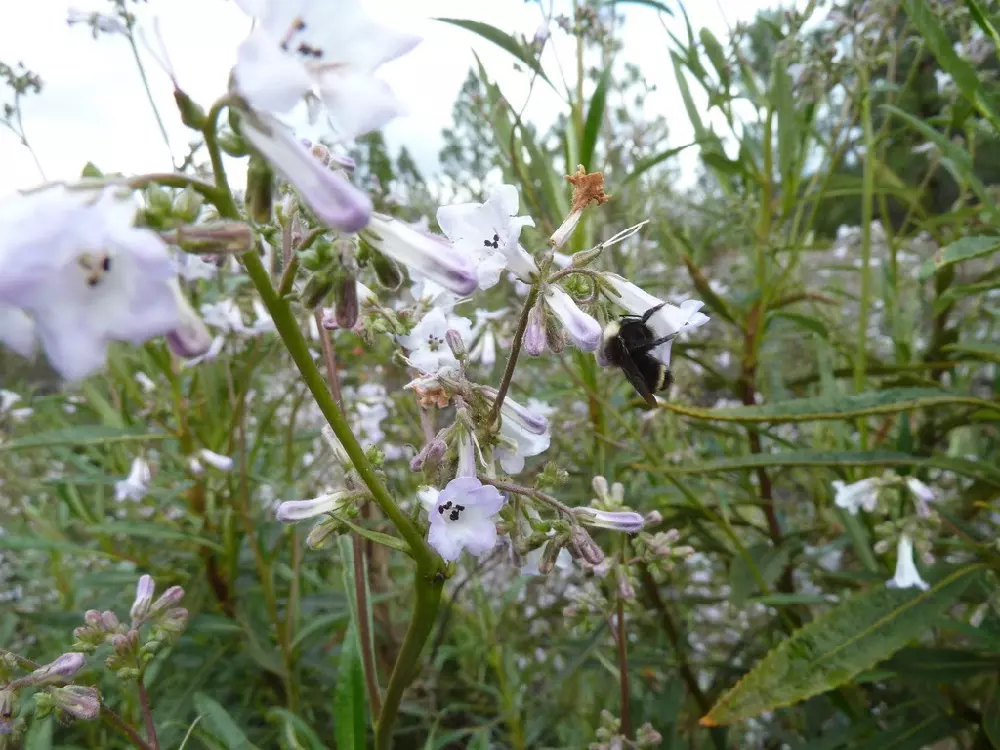Yerba Santa or Eriodictyon californicum is a California native plant that can be described by its strategy of standing up to the fire environments of California. Since wildfires are a natural and regularly occurring event in the Californian environment, such plants as Yerba Santa have developed adaptations necessary for the maintenance of the post-fire conditions. Perhaps the most striking feature of the plant is its flair to rise quite vigorously from the root system after the vegetation has been burnt by flames.
These characteristics also make Yerba Santa suitable for hot environments because of its thick, leathery leaves and aromatic oils. Yerba Santa’s Bold Strategy, as part of California Yerba Santa Fire Adaptations, includes serving a particularly important function in post-fire recovery by stabilizing soils and preventing erosion. Known for being fire-adapted, Yerba Santa fits California’s fire ecology exceptionally well, highlighting its crucial role in supporting and maintaining diverse plant communities.
Yerba Santa: A Resilient Survivor
Yerba Santa is an erect subshrub found in California, which, due to its nature for fire resistance ecology, is commonly associated with fire-scarred regions. California Yerba Santa Fire Adaptations highlight the plant’s remarkable ability to thrive in fire-prone conditions, showcasing its ecological resilience. Yerba Santa’s Bold Strategy lies in its large, tough, leather-like leaves containing fragrant essential oils, allowing it to play a dual role in fire dynamics. When the entire plant is set aflame, it acts as a booster to the burning process, yet triumphantly survives through its resilient roots, further emphasizing its ecological significance.
Apart from fire protection, Yerba Santa is an important component used to prevent soil erosion in areas affected by fire. Due to its high ability to sustain its growth in unfavorable environmental conditions, it plays a crucial role as a fire124 component for the plant community and the fire ecology of California. Such an astounding survival approach reveals its exploitative role in sustaining and proliferation of this plant, Yerba Santa.
The Role of Fire in Yerba Santa’s Life Cycle
Yerba Santa is a California native plant species that is well suited to fire-dependent ecosystems due to the requirement of fire in its life cycle. Its natural endangering by fire is strange in a way that while fire is detrimental to many species it helps germinate Yerba Santa. It has huge, thick, leathery leaves and its oils act as a shield against powerful heat while the extensive root system assists in regrowing in the event the plant is scorched.
A tree invites fire because it assists in removing the heavy layer of dry debris that would otherwise lock up vital nutrients and light from Yerba Santa, the tree’s food. Furthermore, circumstances that exist after a fire for example reduction of competition from other plant species favor growth and dominance of Yerba Santa. Thus, fire is not only a problem for Yerba Santa but also a factor in its reproduction and reproduction for the continuation of its existence Yerba Santa is necessary in fire-dependent landscapes in California.
Fire Adaptations of Yerba Santa
Yerba Santa (Eriodictyon californicum) has developed several extraordinary fire adaptations that make it possible for it to live and reproduce in the fire-prone ecosystems of California. One of its outstanding features is its strong expansion out of a thick root system right after being roasted by fire. This regenerative part is that even if the upper part has been cut down, it has the capability to grow again for the plant.
Thirdly, the heavyset leaves and the oils in the leaves also protect the plant from destructive fiery blasts of wildfires. Yerba Santa is well positioned to thrive soon after a fire because many resources are freed up, including fewer competitors for the space and light requirements to recover or grow. Because of these fire adaptations, Yerba Santa plays a critical role in the fire regime of California and shows the species’ ability to recover after consecutive fires.
The Science Behind Fire-Adaptation in Yerba Santa
The topic of interest is the fire adaptation in Yerba Santa (Eriodictyon californicum) in order to survive and rebound after the fire. Of all the mentioned adaptations one primary feature is to regenerate itself from the root system whenever the aerial parts are burnt by fire. It is due to the dormancy that the root possesses specialized tissues that can withstand very high forms of heat.
Moreover, thick leathery leaves of Yerba Santa are recommended to store moisture and shield the plant against heat. The plant has this characteristic of a somewhat spicy aromatic odor that may also assist it to fight fire and work as a fire repellent. These characteristics, together with the species’ ability to grow in altered fire-setting environments, make Yerba Santa a valuable part of California’s fire-prone environment in which wildfires are essentially natural occurrences.
FAQ’s
How does Yerba Santa survive California wildfires?
Yerba Santa survives wildfires through fire-resistant leaf structures, deep root systems, and the ability to regenerate from underground reserves after the flames pass.
What role does fire play in Yerba Santa’s regeneration?
Fire triggers the release of seeds and clears the ground, promoting germination and helping Yerba Santa regrow quickly after a fire.
Why is Yerba Santa important to California ecosystems after a wildfire?
Yerba Santa stabilizes the soil, prevents erosion, and provides habitat for wildlife, playing a vital role in restoring balance to ecosystems post-fire.
Conclusion
Yerba Santa’s bold strategy is one of resilience; the plant’s risky approach to fire survival makes it seem invincible and undeterred by the constant threat of fires in California. California Yerba Santa Fire Adaptations include anatomical characteristics and physiological adaptations that allow it not just to tolerate fire, but also create conditions that help fuel regeneration. Yerba Santa can sprout quickly after fires because its roots grow so far down into the ground, and its sharp leaves and fragrant oils make it immune to high temperatures, showcasing its remarkable fire-adaptive traits.
Further on, the plant contributes to maintaining the structure of the soil and preserving the biosphere after a fire using prevention of soil erosion and providing conditions for further take-off of new plants. Yerba Santa depends on fire and in return will remain a part of the ecosystem of California’s diverse terrain. These peculiarities of fire adaptations of Yerba Santa make the plant a natural and valuable element of the regional fire-dependent ecosystem and the ability of species to cope with the fire.




